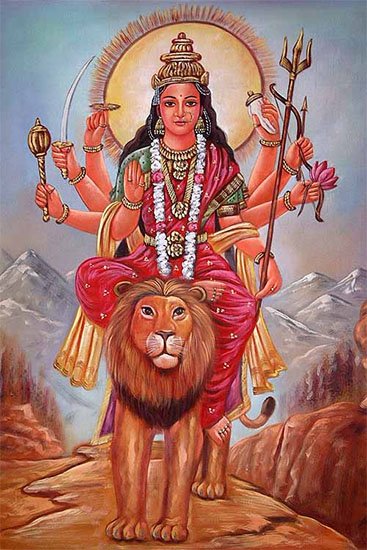Sphatikopama, Sphatika-upama, Sphaṭikopama: 1 definition
Introduction:
Sphatikopama means something in Hinduism, Sanskrit. If you want to know the exact meaning, history, etymology or English translation of this term then check out the descriptions on this page. Add your comment or reference to a book if you want to contribute to this summary article.
In Hinduism
Shaktism (Shakta philosophy)
Source: Google Books: ManthanabhairavatantramSphaṭikopama (स्फटिकोपम) refers to “that which is (white) as crystal”, according to the Manthānabhairavatantra, a vast sprawling work that belongs to a corpus of Tantric texts concerned with the worship of the goddess Kubjikā.—Accordingly, “(Kubjikā) is the colour of (dark) blue collyrium. [...] She wears a tiger skin and a cloak of lion skin. Her limbs are adorned with divine ornaments and she laughs loudly. Her western face is yellow and the one in the north is dark blue. (The one) in the south is black. The eastern one, displayed in front, is red while the one born in the north-east (i.e. above) is (white) as crystal [i.e., sphaṭikopama]. The uppermost face, worshipped as Parā, (shines) like a thousand suns. Śambhu has said that all the faces have fierce gaping mouths with protruding teeth”.

Shakta (शाक्त, śākta) or Shaktism (śāktism) represents a tradition of Hinduism where the Goddess (Devi) is revered and worshipped. Shakta literature includes a range of scriptures, including various Agamas and Tantras, although its roots may be traced back to the Vedas.
See also (Relevant definitions)
Partial matches: Sphatika, Upama.
Query error!
Relevant text
No search results for Sphatikopama, Sphaṭika-upama, Sphatika-upama, Sphaṭikopama; (plurals include: Sphatikopamas, upamas, Sphaṭikopamas) in any book or story.